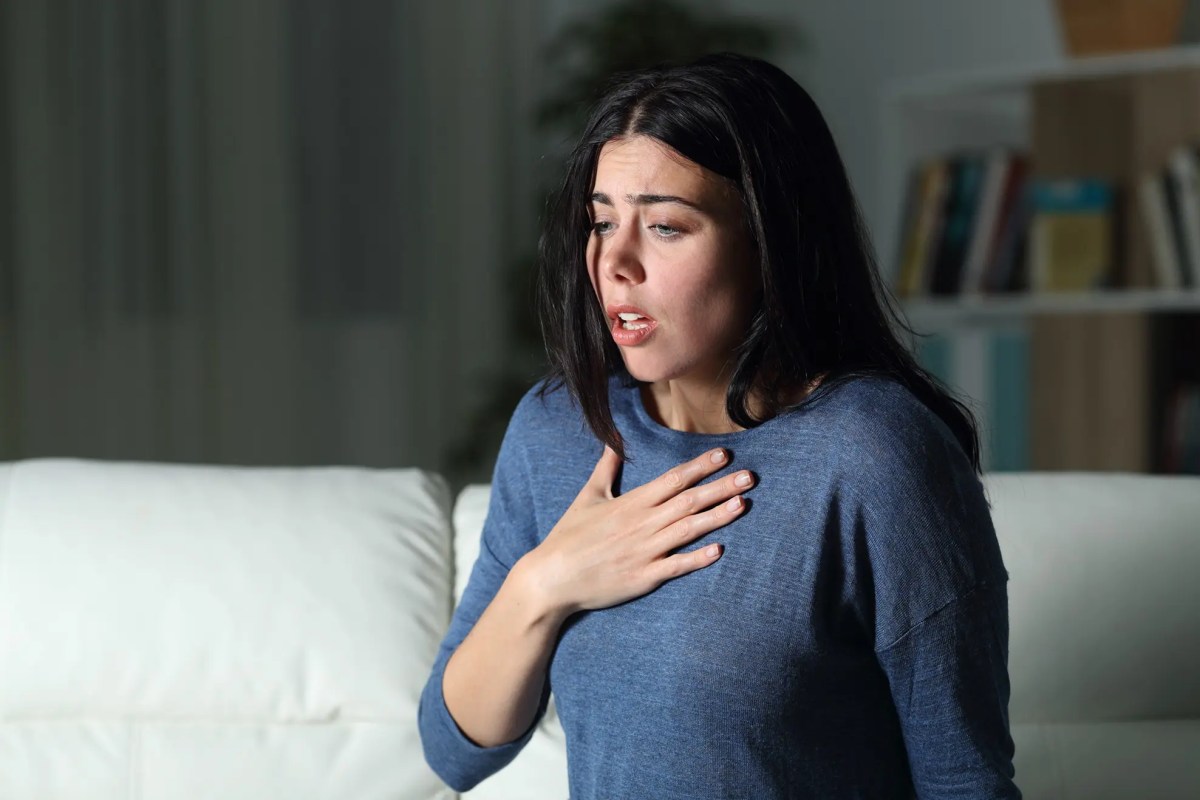Anxiety Therapy in NYC: Get the Help You Need
Last updated: October 12th, 2025
At the Manhattan Center for Cognitive-Behavioral Therapy, we specialize in helping people overcome anxiety. If you’re dealing with panic attacks, OCD, excessive worry, or other fears, we can help. Years of scientific research have shown us how to make anxiety therapy quite effective. Contact us today to be matched with a therapist who can help you.
Anxiety is something we all experience at times. However, for some of us it affects us in ways that can be debilitating. Anxiety can take many forms including panic attacks, obsessive thinking, compulsive behavior, phobias, excessive worry, difficulties in social situations and difficulties following traumatic events.
Cognitive-Behavioral Therapy For Anxiety
Typically, cognitive-behavioral therapy (CBT) for these problems involves learning new ways to deal with anxious thoughts and anxiety-provoking situations. By learning to change the way we think and what we do, we can reduce the impact that anxiety has on us. One important part of how CBT accomplishes this is through the use of personalized exercises. Often a CBT therapist will assign these as “homework” designed to help a client develop new habits and behaviors. Through practice, the new skills and behaviors become more automatic and more comfortable. Positive change happens most often through this type of practice.

Which Type of Anxiety Do You Have?

Worry
We all worry at times. When worry becomes clearly excessive or disproportionate to the actual risk, it can be a sign of a condition called generalized anxiety disorder (GAD).
Worry in GAD is typically about future events and outcomes. A prominent theory about excessive worry is that it functions as a way to help us reduce unpleasant feelings of uncertainty. In cases of GAD, however, this effort creates more problems than it solves.
People with GAD tend to interpret information in ways that produce a sense of threat. This threat can lead to further worry and can eventually affect their view of the world.

Panic Attacks
Panic attacks are one of the most unpleasant parts of having anxiety. Not everyone with anxiety has them, of course. But for those who do, they can be very impactful. Panic attacks are sometimes due to a condition called panic disorder. Panic disorder involves a history of panic attacks and fear of (or efforts to avoid) future panic attacks.
A panic attack is a period of intense fear or discomfort that typically includes elevated heart rate; shallow, quick breathing, or the sensation of having trouble breathing; dizziness; fear of dying or having a heart attack; fear of passing out, fear of going crazy, or other symptoms.
Panic attacks can either happen “out of the blue” or can happen in specific situations, e.g., when flying, in crowds or on trains or subways. Panic attacks are sometimes accompanied by an urge to leave the place you’re in.

Phobias
The most common phobias involve animals, insects, heights, blood, needles, enclosed spaces and flying. These phobias respond well to behavior therapy. Other problems commonly thought of as phobias (e.g., fear of flying, fear of germs or contamination) are actually more likely to be related to different anxiety disorders.

Social Anxiety
Social anxiety involves anxiety that happens in specific social situations. Common settings where social anxiety arises include: giving a presentation, conversations with an authority figure at work, or going to parties where you don’t know many of the guests.
People with social anxiety tend to avoid these situations or endure them with difficulty.

Post-Traumatic Stress Disorder (PTSD)
Sometimes anxiety symptoms that affect our lives are related to a distressing event from our past. Often, the link between the symptom and the event isn’t obvious.
For example, one symptom of PTSD is an exaggerated startle response — reacting strongly when something unexpectedly scares you. It might not be easy to recognize this as a symptom of anxiety. Even if you do, you might not realize its link to a specific past event.
However, other symptoms of PTSD might be easier to recognize. For example, it’s not hard to spot the link between a traumatic event and symptoms like nightmares, unwanted memories, or changes in thinking.

Obsessions And Compulsions: OCD
Obsessive-compulsive disorder (OCD) occurs when someone has either obsessions or compulsions or both.
Compulsions are repeated behaviors such as cleaning, washing, checking, reviewing or counting things. Typically, someone with OCD will perform compulsions repeatedly and have trouble stopping.
Obsessions are thoughts that produce immediate, significant anxiety and often an immediate urge to figure something out.
Obsessions are typically unrealistic fears. For example, the fear that you ran someone over when driving earlier today, or that you will bring harm to a loved one if you don’t recite a sequence of numbers out loud.
Anxiety Treatment Options
Treatment for anxious people has improved substantially in the past 40 years. We now have a solid scientific understanding of which types of therapies work best for various types of anxiety. We also have medications that were not available decades ago.
Cognitive Behavioral Therapy (CBT)
Extensive research studies of various psychotherapies have shown cognitive-behavioral therapy (CBT) to be the most effective therapy for anxiety. (Learn more on our CBT informational page.) CBT refers to a family of therapies that focus on helping you change your thought patterns, your reactions to situations, and your choices in the service of reducing anxiety. Therapies like exposure therapy, acceptance and commitment therapy, cognitive processing therapy, and habit reversal training are all types of CBT.
Exposure Therapy
Exposure therapy is an effective treatment for phobias and related disorders. This form of cognitive-behavioral therapy (sometimes referred to as graduated exposure) involves gradually and purposefully coming into repeated contact with something that causes anxiety. This can be a feeling, emotion, or thing. Exposure therapy is used for OCD (in this context it’s known as exposure and response prevention therapy), panic disorder, and PTSD. Aspects of it are often part of CBT for other types of anxiety such as social anxiety and generalized anxiety disorder, and emotion regulation problems
Acceptance and Commitment Therapy
Acceptance and commitment therapy (also known as ACT) is a type of cognitive-behavioral therapy. It is effective for many emotional difficulties. It teaches people to create a different relationship with their thoughts. This helps with problems that are driven by unhealthy thinking. It also helps people to examine whether their actions and choices are consistent with what they value.

Cognitive Processing Therapy
Cognitive processing therapy (CPT) is a treatment for PTSD. CPT helps PTSD sufferers examine their thinking about the traumatic event, about themselves, about the world and other people. In so doing, the therapy creates powerful change that can drastically improve PTSD. Recently, a journalist brought attention to this therapy by recounting CPT’s effects in a 2019 NPR podcast.
Habit Reversal Training
Habit reversal training (HRT) is a type of therapy used for tics and for hair pulling and skin picking. HRT systematically teaches people to become more aware of the tic or hair pull, e.g. Then it gives them behavioral strategies to then prevent the tick or other behavior from occurring. This type of treatment is quite effective for tics, hair pulling, and skin picking.
For any type of CBT, the first step in treatment is diagnosis. An evaluation with a CBT therapist will provide this information and determine the best treatment options for your type of anxiety.
Medication
SSRIs
Research has shown that for many types of anxiety, medication can be almost as effective or as effective as CBT. Perhaps the most commonly prescribed type of medication for anxiety disorders are called selective serotonin reuptake inhibitors (SSRIs). SSRIs cause more serotonin, a naturally occurring chemical in the brain, to have a greater impact on the cells of the brain. Prozac, Luvox, Celexa, and Zoloft are all examples of SSRIs.
Benzodiazepines
Benzodiazepines are quite different from SSRIs. They are fast-acting, so their effects are typically felt in less than an hour. They are also potentially habit forming, unlike SSRIs and SNRIs. Examples of benzodiazepines include Valium, Xanax, Klonopin and Ativan. Benzodiazepines are not a good long-term solution for anxiety. However, when combined with other treatment they can be a helpful short term solution.
SNRIs
A related class of medications called serotonin-norepinephrine reuptake inhibitors (SNRIs) is less commonly used. Effexor, Cymbalta, and Pristiq are all examples of SNRIs. These medications are generally considered safe and not addictive.
Anxiety Therapy and Other Treatments: Summary
There are pros and cons to using CBT vs. medications to treat anxiety. CBT requires more time and effort. However, the skills you learn will help for a long time. Although medications affect your brain chemistry, they do not fix the processes and habits that led to the anxiety. Hence, their benefits last only as long as you take the medication.
We are fortunate to have various options available for help with anxiety, each with their different advantages and disadvantages. Remember that there are several different types of anxiety; make sure that the treatment you choose works well for your particular type of anxiety.
Finding Help
Please contact us if we can help you in your efforts to find anxiety therapy here in New York. Our CBT therapists are doctoral-level psychologists. We also have student therapists who offer reduced-fee services. Our offices are in midtown Manhattan, but we offer teletherapy services to people elsewhere in New York State, New Jersey, Massachusetts, North Carolina, Virginia and Florida. If you’re looking for CBT therapy in another part of the country or world, please contact us — we are happy to help!
